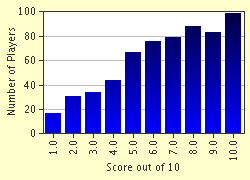Quiz Answer Key and Fun Facts
1. Berlin is a fully-fledged state ('Land') of the Federal Republic of Germany.
2. What is the approximate population of Berlin (2015 figure)?
3. The terrain of Berlin is for the most part _______?
4. The largest ethnic minority in Berlin is ______?
5. The main means of rapid public mass transport in Berlin are the U-Bahn('Untergrundbahn') and the _____?
6. When did Berlin first become the capital of Germany?
7. In 1945 Germany was divided into four zones, and Berlin into four sectors (American, British, French and Soviet in both cases). The position of the three Western sectors of Berlin (that is, West Berlin) was precarious. Why?
8. Berlin is located near the geographical center of modern Germany.
9. Central Berlin lies on two major rivers. One is the Havel, the other main river, which runs right through the historic center, is the _____?
10. The 'Fall of the Wall' (on 9th November 1989) that had separated East and West Berlin is one of the best remembered events in the collapse of Communism in Europe. In what year was the notorious Berlin Wall built?
Source: Author
bloomsby
This quiz was reviewed by FunTrivia editor
gtho4 before going online.
Any errors found in FunTrivia content are routinely corrected through our feedback system.
